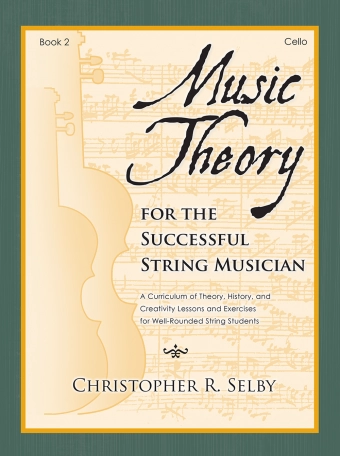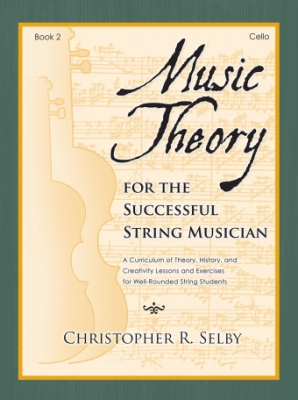Opens in a new window
GIA Publications Music Theory for the Successful String Musician, Book 2 - Selby - Cello - Book

- Author/Composer:
- SELBY, CHRISTOPHER R.
- Instrumentation:
- CELLO
- Model #:
- G-10117
Author: Christopher Selby
Format: Book
Instrumentation: Cello
Music Theory for the Successful String Musician is the music theory and history curriculum string programs have been waiting for. In two carefully crafted books, author Christopher Selby presents a comprehensive and pedagogically sound sequence specifically for orchestral string students and also addresses questions and offers guidance in resolving problems that are unique to the orchestra classroom.
This curriculum will help directors teach music theory, music literacy, music history, and creativity--all of those hard-to-reach standards that ultimately help music students become more well-rounded and better performers, creators, and consumers of great music.
Students will learn:
- Tonal literacy. Fingerboard maps and diagrams teach students how all sharp, flat, and natural notes on the staff relate to the spaces on the fingerboard. Sequential lessons introduce students to minor and major seconds and the effects that key signatures and accidentals have on finger patterns. Students also learn about thirds, tetrachords, and key signatures for all major and minor scales.
- Rhythmic literacy. The rhythm units teach students how to mark their music so they can perform rhythms independently, correctly, and confidently. Students will learn to read and decipher complex dotted, tied, and syncopated rhythms, as well as the longer notes and rests that are common in orchestra music.
- Historical awareness. Students will learn the evolution of string instruments and how string music has evolved over the past four centuries. They will learn about some of the great composers and musical genres from the Baroque, Classical, Romantic, and Modern eras.
- Creative activities. Creativity units teach students how to write down their ideas while also encouraging them to break free from written notation and focus on the enjoyment of making their own music with friends. These units give students opportunities to contribute their own ideas to the ever-evolving field of string music.
Q & A
There are currently no questions for this product.
Reviews
There are currently no reviews for this product. Be the first to write one!





